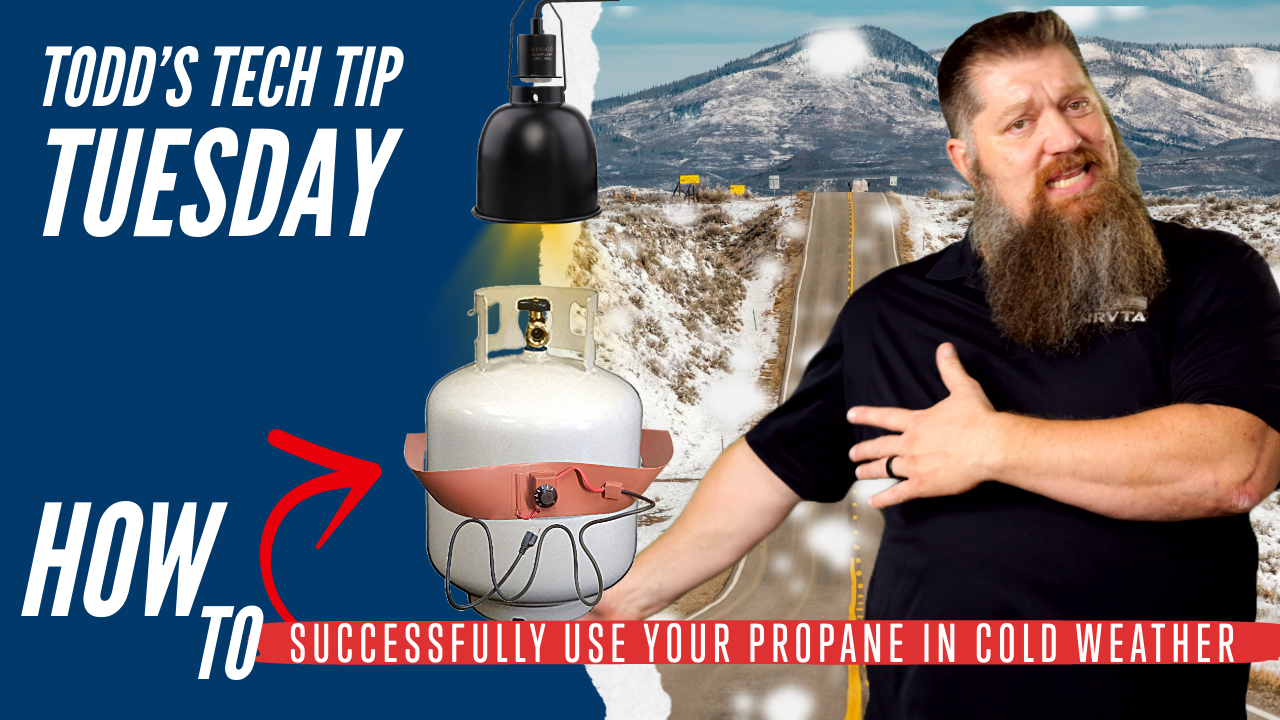Get your RV Technician Certification in as little as 5 weeks!

Welcome back to Todds Two Minute Tech Tip Tuesday, where we unravel the mysteries of RVing, brought to you by the esteemed National RV Training Academy, the pinnacle of hands-on RV education in America. Before we dive into today’s invaluable insights, don’t forget to hit the subscribe button to stay updated on all things RV tech!
As winter approaches, many RV enthusiasts grapple with the challenge of propane consumption in cold weather. Have you noticed your propane supply dwindling faster as the temperature drops? Let’s delve into the science behind propane usage in chilly conditions and explore practical solutions to optimize your propane system.
Understanding Propane Dynamics: Propane, much like water, requires vaporization to be usable in appliances. Unlike water, which boils at 212°F, propane liquefies at a bone-chilling -44°F. This presents a significant challenge in colder climates, where the volume of propane vaporization may be insufficient to meet appliance demands.
The Cold Weather Conundrum: Even when external temperatures hover above -44°F, the volume of propane vaporization might still fall short, particularly for larger appliances like furnaces. As a result, RVers often find their propane appliances struggling, especially during frigid nights.
Dispelling Common Misconceptions: Before we delve into solutions, it’s crucial to debunk common myths. Contrary to popular belief, purging propane lines to remove air isn’t the solution. The real issue lies in inadequate heat to vaporize propane, exacerbated by freezing tank exteriors.
Practical Solutions for Propane Optimization: To combat freezing and enhance propane efficiency, consider warming your tanks using various methods. While warm water can provide temporary relief, investing in silicone heating pads with thermostats offers a more sustainable solution. Simply affix the heating pad to the tank’s exterior, ensuring the temperature remains between 80°F and 90°F for optimal vaporization.
Alternative approaches include utilizing heated blankets or even heat lamps placed strategically inside storage compartments. While these methods may not be as efficient, they can offer temporary respite during chilly spells.
Embracing Propane Efficiency: By understanding propane dynamics and implementing proactive measures, RVers can ensure uninterrupted propane supply and enhanced comfort during cold weather excursions.
Thank you for tuning in to Todds Two Minute Tech Tip Tuesday. Until next time, happy RVing!
Get Registered Today!
Talk to a student advisor to learn more!
